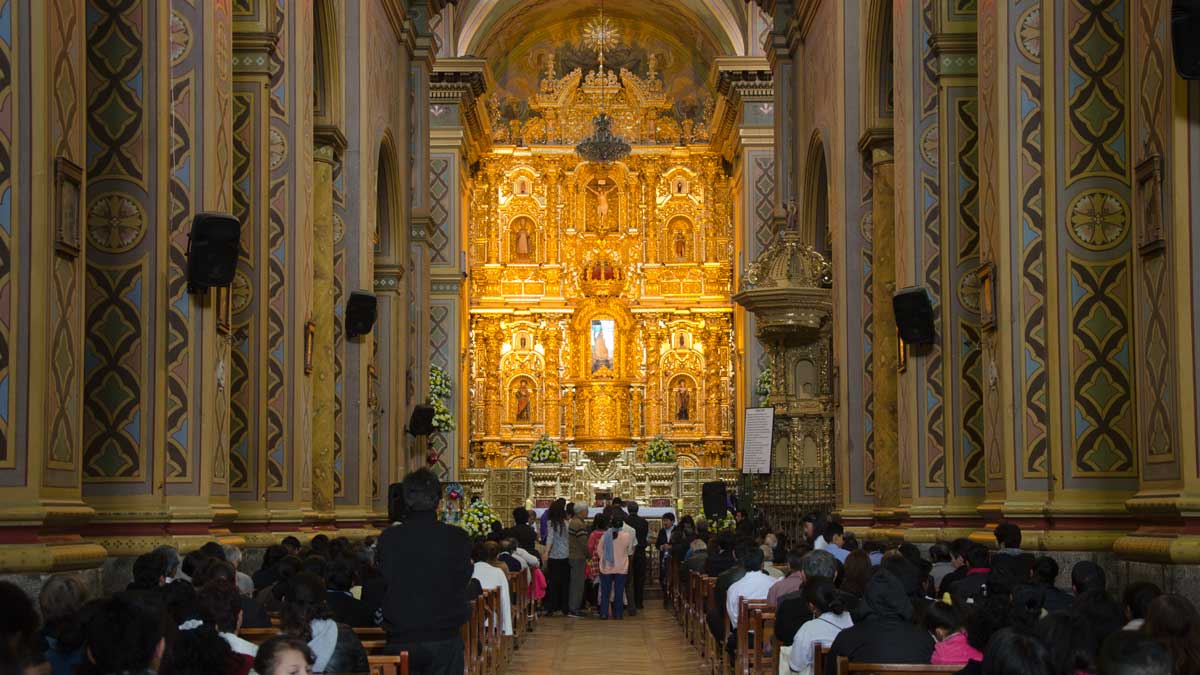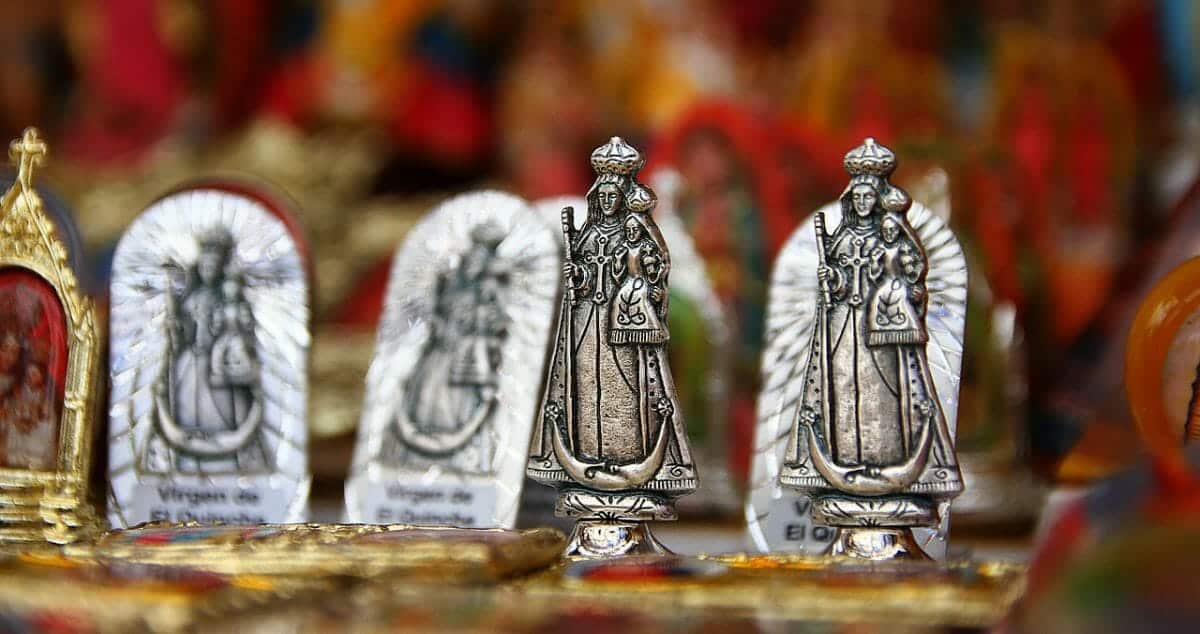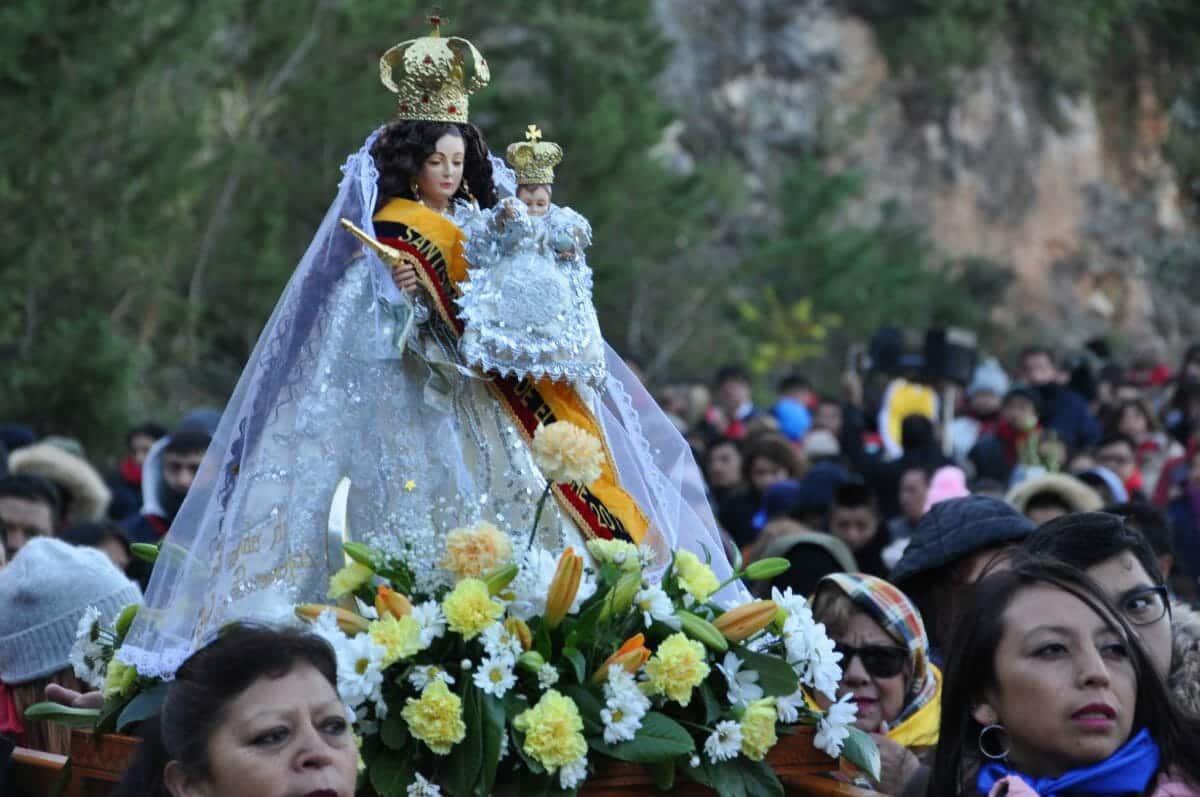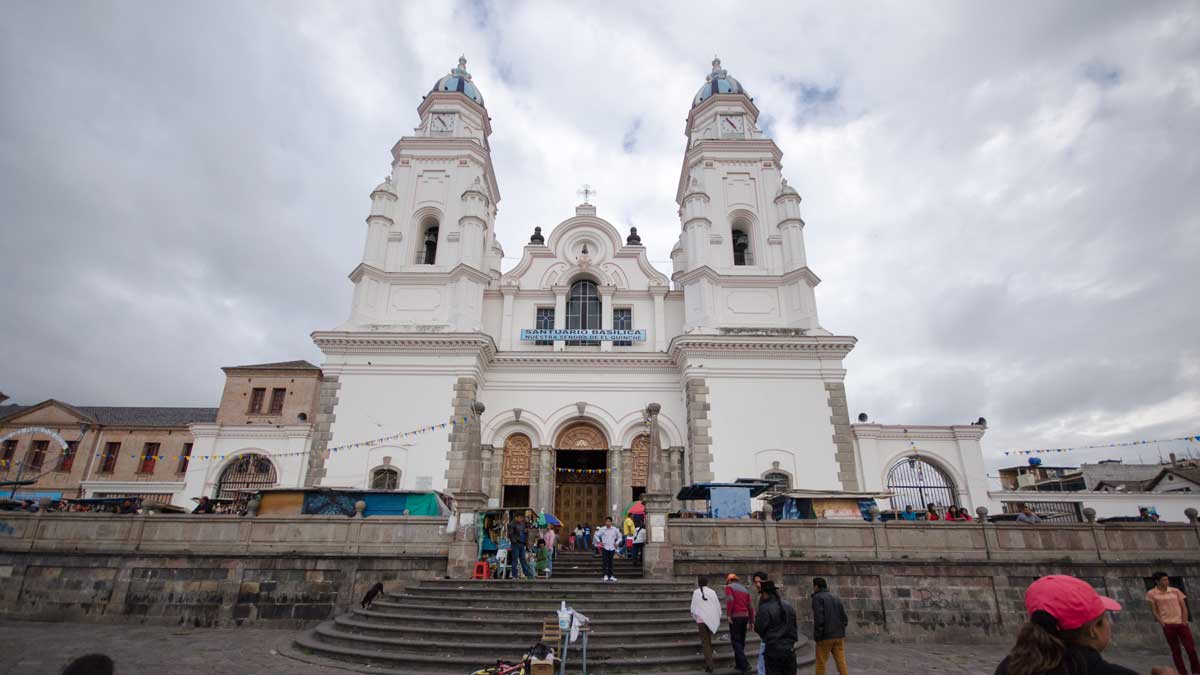Origins of the Virgin of El Quinche
The hand-carved wooden statue is the work of the artist and architect Diego de Robles of the Quito School. Crafted in the late 16th century out of cedar wood, the statue stands 24.5 inches tall. She wears heavily embroidered robes embellished with precious gems and gold and silver threads. She holds a scepter in her right hand and, in her left, she supports the infant Jesus. Both wear ornate crowns covered in gold. She stands atop a silver crescent moon, a symbol often associated with the Virgin of the Apocalypse.
First Known As The Virgin of Oyacachi
Legend holds that in the 1590s, the people of Lumbisí, a small pueblo in Cayambe, requested that the artist Robles make a copy of a statue he made in the decade prior for the church in Guapalo. That statue was a copy of La Virgen de Guadalupe from Mexico. Unfortunately, the Lumbisí failed to come up with payment for the commissioned work.
Strapped for cash, Robles eventually used the statue to purchase hardwoods for future statues. He arrived in Oyacachí and exchanged the Virgin for some of the high-quality cedar that grew in their prolific forests.
The community placed the statue in a place where birds reportedly flocked to her presence. Her repute quickly spread among indigenous Ecuadorians looking for ways to combine their ancient worship of the Pachamama with Catholicism. A new goddess/virgin was born, the Virgin of Oyacachi.
The First Miracle of the Virgin of Oyacachi
The statue was so beloved that when Robles returned to Oyacachí, local residents asked him to build her a shrine. At first, he declined. However, on that return trip to Quito, his horse bucked and threw him from the saddle while crossing over a turbulent river. As he fell, he cried out to the Virgen. His foot caught in the timbers of the bridge, saving him from imminent death. Appearing out of the fog, two people came to his assistance, pulling him free. Before he could thank them, they disappeared into the mist.
Robles credited the Virgin with saving his life. He soon returned to Oyacachi to build a shrine in her honor.
In the following years, the Virgin of Oyacachi continued to perform miracles. She is credited with saving children from wild bears, healing the sick and comforting the dying at their bedside. Often, her statue would be missing but days later she would return, her feet heavy with mud.
How The Virgin of Oyacachi became the Virgin of El Quinche
By the early 17th century, stories surrounding the Virgin of Oyacachi included rumors of animal sacrifice. Believing that the indigenous residents of Oyacachi were not truly practicing Catholics, a local archbishop relocated the beloved statue in 1604.
That’s how she became the main attraction in the town of El Quinche.
However, when she first arrived, there was only a small church to greet her. In 1630, the local community completed a larger, more impressive church to better compliment the venerated statue. Her notariety grew.
In 1632, she made her first visit to Quito where she was declared a patron and protectress of the city. Then, in 1822, the federal government named her a protector of Ecuadorian Independence.
This church remained the Virgin’s home despite an earthquake in 1869. The earthquake only added to her fame as the statue remained unscathed even while the church received heavy damage.
A New Home for the Virgin of El Quinche
It wasn’t until 1905 that the local residents of El Quinche rebuilt the church. Slowly but surely the fame of the Virgin of El Quinche grew well beyond the immediate region.
In 1943, Pope Pius XII canonically crowned the Virgin of El Quinche. In 1958, Pope John Paul III declared the church at El Quinche a minor basilica. Later, in 1985, Rome declared El Quinche a National Sanctuary of Ecuador. Most recently, Pope Francis visited El Quinche on July 8, 2015, during his tour of Ecuador.
A Modern Pilgrimage
Today, the Virgin of El Quinche is often found far from home, visiting other parishes around the Ecuadorian Andes. But every November, hundreds of thousands of pilgrims take to the streets and highways leading from their homes to the town of El Quinche. The actual date fluctuates, normally beginning on the Friday before November 21st, the day that a special mass is held in the sanctuary.
The pilgrimage takes place at night. If you find yourself driving the highways around Quito on the said evening, you will notice streams of people walking in the center of streets or on a lane of the highway closed for the passage of so many pilgrims. That was how we learned about the event, as we drove to the airport to pick up a Thanksgiving day visitor. Both to and from the airport, we saw hundreds, if not thousands, of people walking to El Quinche.
















0 Comments